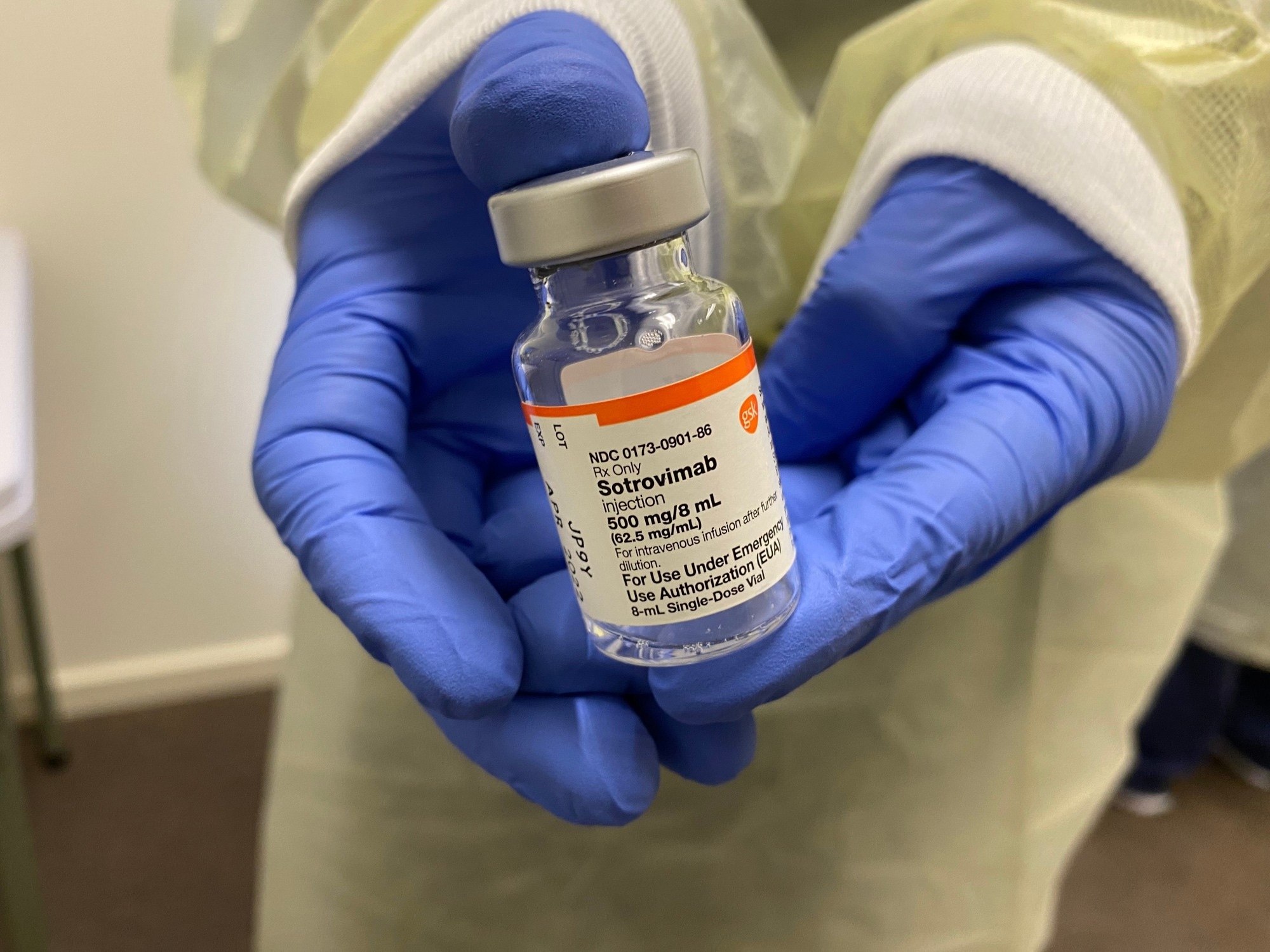In a recent article posted to the medRxiv* preprint server, researchers explored sotrovimab uptake for severe coronavirus disease 2019 (COVID-19) prophylaxis and its safety across the community populations in England.
 Study: Uptake of Sotrovimab for prevention of severe COVID-19 and its safety in the community in England. Image Credit: ice_blue/Shutterstock
Study: Uptake of Sotrovimab for prevention of severe COVID-19 and its safety in the community in England. Image Credit: ice_blue/Shutterstock

 *Important notice: medRxiv publishes preliminary scientific reports that are not peer-reviewed and, therefore, should not be regarded as conclusive, guide clinical practice/health-related behavior, or treated as established information.
*Important notice: medRxiv publishes preliminary scientific reports that are not peer-reviewed and, therefore, should not be regarded as conclusive, guide clinical practice/health-related behavior, or treated as established information.
Background
The use of Sotrovimab (brand name: Xevudy), a neutralizing monoclonal antibody (nMAB), as a severe acute respiratory syndrome coronavirus 2 (SARS-CoV-2) therapy for extremely clinically susceptible patients in the community was authorized by the Medicines and Healthcare products Regulatory Agency (MHRA) in the United Kingdom (UK) on 2 December 2021.
In the UK, sotrovimab is suggested as a therapeutic option for COVID-19 in eligible, non-hospitalized children aged 12 years or older and adults. A healthcare provider will administer sotrovimab as a single intravenous infusion to the patients. Moreover, the treatment should begin as early as possible following COVID-19 diagnosis and within five days of the onset of symptoms.
Available reports indicate that sotrovimab greatly enhances clinical outcomes in COVID-19 patients who are not hospitalized but are at high risk of developing severe SARS-CoV-2 infection. According to existing studies, it has mild to moderate adverse effects, but no evidence exists regarding its safety in real-life situations.
About the study
In the current descriptive cohort trial, the researchers examined the safety and uptake of sotrovimab in community COVID-19 patients throughout England using connected national databases.
Additionally, they wanted to ensure that sotrovimab was utilized appropriately and without discrimination to safeguard against severe SARS-CoV-2 illness. The study took place between 11 December 2021 and 24 May 2022.
For the study, the authors leveraged Blueteq, the national specialized commissioning database for England, containing data that COVID Medicine Delivery Units (CMDUs) and National Health Service (NHS) hospitals have supplied. They compared the medical and demographic traits of sotrovimab-treated people with the untreated among the SARS-CoV-2-positive patients qualified for the therapy or who had received the treatment.
The team employed a cohort analysis to assess sotrovimab uptake. In addition, the risks of 49 pre-defined probable adverse events in the two to 28 days following treatment were determined utilizing a self-controlled case series method.
Results
The study results revealed that there were 172,860 COVID-19 patients eligible for sotrovimab therapy between 11 December 2021 and 24 May 2022. Further, while 21,487, i.e., 94.2%, of the 22,815 patients who received sotrovimab had a positive COVID-19 test, 5,999, i.e., 26.3%, were not on the list of eligible patients.
Nonetheless, co-morbidities, including acute renal failure, rheumatoid arthritis, or multiple sclerosis, utilized to identify extremely clinically susceptible SARS-CoV-2 patients were present in the medical histories of treated patients.
The mean age, i.e., 54.6, and gender distribution, i.e., females: 58.1% versus 60.9%; males: 41.1% versus 38.9%, were comparable between sotrovimab-untreated and treated eligible persons. However, the uptake varied significantly by ethnic group, being higher among Indian(15%), Other Asian (13.7%), White (13.4%), and Bangladeshi (11.4%) individuals, and lower among Black African(4.7%) and Black Caribbean (6.4%) populations.
Regarding safety, the investigators found no evidence of a generalized increase in the likelihood of hospitalization for any anticipated adverse events in the two to 28 days after therapy. Nevertheless, when the 28-day risk period was divided into shorter time frames, they discovered a higher risk of hospitalization linked to rheumatoid arthritis and systemic lupus erythematosus two to three days after the treatment.
Conclusions
In the present population-based research comprising over one million individuals from England eligible for sotrovimab treatment or receiving sotrovimab, the scientists came up with several significant findings with clinical and policy implications.
The team discovered that almost one-fourth of patients treated with sotrovimab were not on the extremely clinically susceptible COVID-19 patients list. Yet, the medical background of treated patients comprised co-morbidities used to recognize these patients, suggesting general adherence to the government guidelines.
In addition, the researchers noticed that the percentages of sotrovimab-treated patients varied among ethnic groups, with higher uptake in Bangladeshi, White, Indian, and other Asian cohorts and lower uptake in Black African and Black Caribbean populations. This inference implies that some disparities in treatment uptake were connected to ethnicity.
Notably, the ethnic discrepancy discovered in this work was crucial given the evidence of ethnic differences in severe SARS-CoV-2 outcomes, which suggests that those with the highest clinical demand were not receiving therapies from which they might benefit, possibly escalating health disparities.
Moreover, when the authors limited the risk time frame, they found an elevated incidence of rheumatoid arthritis and systematic lupus erythematosus in the two to three days following treatment. Nevertheless, they did not observe an enhanced risk of any suspected adverse reactions during the overall course of two to 28 days post-treatment.

 *Important notice: medRxiv publishes preliminary scientific reports that are not peer-reviewed and, therefore, should not be regarded as conclusive, guide clinical practice/health-related behavior, or treated as established information.
*Important notice: medRxiv publishes preliminary scientific reports that are not peer-reviewed and, therefore, should not be regarded as conclusive, guide clinical practice/health-related behavior, or treated as established information.